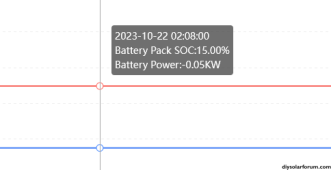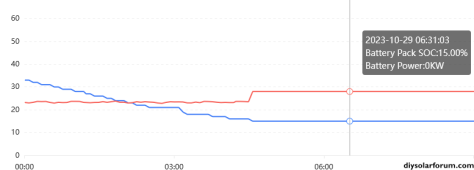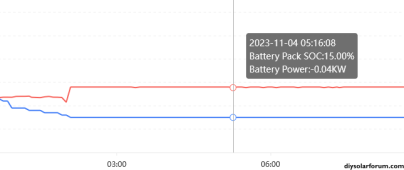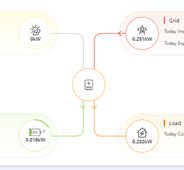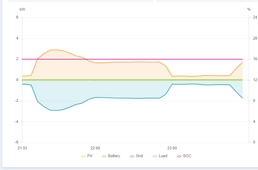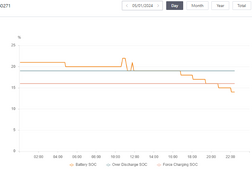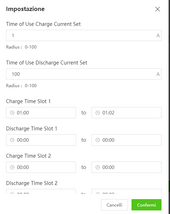Glad I'm not the only one with this issue. I tried opening a ticket with Solis and they said they changed something and also offered an update. I had a look though the settings and found that Grid Standard Precision has been changed from "Voltage 0.1V, Time 0.01s, Frequency 0.01Hz" to "Voltage 1V, Time 0.1s, Frequency 0.1Hz". Not sure why they changed this and was curious if anyone had any insight into that!?
I accepted the update and am now running firmware version 14003F on my RHI-3P10K-HVES-5G. Interesting at first that seemed to solve the problem of battery drain once hitting minimum SOC but have now noticed a few occasions where it has not occured/odd behaviour. Few imaged attached. 1 is before update (~50w being pulled), 2 is after (Nothing being pulled once hitting minimum SOC), 3 is the behaviour I'm seeing now, patches of nothing and with random areas where it pulls from battery. It also now only pulls 38w when it decides it needs to.
Since we are now in the winter months I have just bumped minimum SOC to 20% with force at 10% to give the bit more leeway and prevent force charges.
I accepted the update and am now running firmware version 14003F on my RHI-3P10K-HVES-5G. Interesting at first that seemed to solve the problem of battery drain once hitting minimum SOC but have now noticed a few occasions where it has not occured/odd behaviour. Few imaged attached. 1 is before update (~50w being pulled), 2 is after (Nothing being pulled once hitting minimum SOC), 3 is the behaviour I'm seeing now, patches of nothing and with random areas where it pulls from battery. It also now only pulls 38w when it decides it needs to.
Since we are now in the winter months I have just bumped minimum SOC to 20% with force at 10% to give the bit more leeway and prevent force charges.



